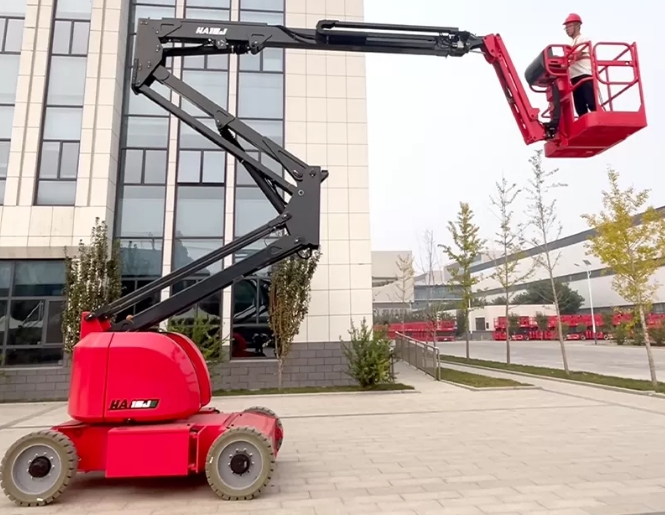How To Pick the Right Articulating Arm Lift
Articulating arm lifts are engineered to provide dynamic positioning solutions for various applications, ranging from computer monitor mounts to heavy-duty industrial equipment. They offer adjustability, stability, and ergonomic support—key elements that contribute to their increasing popularity across multiple industries. When evaluating these systems, it is essential to have a deep understanding of their core functions and benefits.
What Are Articulating Arm Lifts?
At their core, articulating arm lifts are mechanical devices that allow users to position devices or loads with a high degree of freedom. They typically consist of several joints, springs, and locking mechanisms that work together to provide smooth, effortless movement. Flexibility is at the heart of these designs, which is why they are widely used in environments where frequent repositioning is required.
The Importance of Ergonomics and Efficiency
We place a strong emphasis on ergonomics. The correct articulating arm lift can drastically reduce strain and enhance comfort by allowing equipment to be adjusted to the ideal height and angle. This adjustment capability leads to better posture, minimized repetitive strain injuries, and an overall boost in efficiency.
Key Factors to Consider When Choosing an Articulating Arm Lift
Choosing the right articulating arm lift is a multifaceted process. Here, we detail the most critical factors you should evaluate before making a purchase.
1. Load Capacity and Weight Limits
One of the most fundamental considerations is the load capacity of the lift. It is imperative to match the lift’s weight capacity with the weight of the equipment or object you intend to support. Overloading an articulating arm can lead to premature wear or even catastrophic failure. Look for products with clearly specified weight limits and consider a safety margin when determining your needs.
2. Range of Motion and Adjustability
The range of motion is another vital factor. The best articulating arm lifts offer a wide span of motion across multiple axes, allowing users to reposition their equipment with ease. Whether you require subtle adjustments for fine-tuning or significant repositioning for different tasks, ensure that the articulating arm can accommodate the required degrees of freedom. We recommend focusing on models that provide smooth movement, minimal friction, and a consistent locking mechanism.
3. Durability and Build Quality
The durability of the lift is critical, especially in industrial and high-use settings. High-quality materials like aluminum, stainless steel, or reinforced composites can significantly extend the lifespan of the device. We advise scrutinizing the build quality, checking for robust construction, corrosion resistance, and a design that can withstand heavy usage. Look for products with certified safety standards and reliable warranties.
4. Installation and Compatibility
Ease of installation and compatibility with your existing setup can be deciding factors. Many articulating arm lifts are designed for quick and straightforward installation. Whether you are mounting a monitor in an office or setting up equipment in a factory, ensure that the device comes with clear instructions, necessary mounting accessories, and adaptable interface options. Compatibility with your equipment’s mounting points and connectivity is crucial for a seamless integration.
5. Safety Features and Locking Mechanisms
Safety should always be a top priority. High-end articulating arm lifts include various safety features such as anti-slip grips, secure locking systems, and overload protection. A reliable locking mechanism ensures that once your device is in the desired position, it remains steady even under dynamic conditions. We highly recommend evaluating the safety certifications and testing standards that the product adheres to, ensuring maximum protection for both the equipment and the user.
Evaluating the Technical Specifications
In addition to the primary factors mentioned above, a thorough evaluation of technical specifications is necessary for making an informed decision.
Material Composition and Weight
Material composition plays a significant role in the overall performance of an articulating arm lift. Lighter materials may offer ease of movement, but they must still be robust enough to handle the weight they are designed to carry. Heavy-duty models often use a combination of metal alloys that balance strength with manageable weight, ensuring optimal performance in a variety of conditions.
Torque and Joint Strength
Each joint within an articulating arm lift has its own torque and strength rating. These ratings indicate the force that each joint can resist without deforming. It is important to assess whether the combined torque of all joints meets the operational requirements of your equipment. For applications involving frequent movement or heavy loads, investing in an articulating arm lift with high torque ratings can prevent mechanical fatigue and prolong the device’s lifespan.
Precision and Adjustability
When precision is paramount, such as in medical, photographic, or technical settings, the adjustability and fine-tuning capability of the arm become key considerations. Look for models that offer incremental adjustments and maintain accuracy in positioning. The ability to finely adjust the position can enhance productivity and ensure that the equipment is always perfectly aligned with the task at hand.
Practical Applications and Use Cases
Articulating arm lifts find applications in diverse fields. Here, we discuss some of the primary use cases to help you understand the versatility and potential of these devices.
Office and Home Workspaces
For modern offices and home workspaces, articulating arm lifts provide an ergonomic solution for monitor mounting. They allow employees to customize their workstations, reducing neck and eye strain, and promoting a healthier work environment. In home offices, these lifts can help maintain a clean, uncluttered desk while offering superior flexibility for viewing angles.
Industrial and Manufacturing Environments
In industrial settings, articulating boom lifts are used to support heavy equipment, tool holders, or control panels. Their rugged design and high load capacity make them suitable for factories, warehouses, and production lines. The ability to reposition equipment quickly and safely can lead to significant improvements in workflow efficiency and operational safety.
Creative and Technical Studios
Articulating arms are also highly beneficial in creative environments such as photography studios, video production sets, and broadcast facilities. They allow for dynamic adjustments of cameras, lighting rigs, and other critical equipment, ensuring that each element is perfectly positioned. This flexibility is essential for achieving the desired aesthetic or technical outcome.
Conclusion
In conclusion, selecting the right articulating arm lift is a decision that demands careful consideration of load capacity, range of motion, durability, and safety features. By thoroughly evaluating these aspects and understanding your specific requirements, you can make an informed choice that not only meets but exceeds your expectations. Our comprehensive guide is designed to assist you every step of the way—from understanding the basic mechanics to making the final, confident decision.
At the heart of this selection process lies the importance of balancing technical specifications with practical usability. We are committed to providing detailed insights and expert recommendations that empower you to choose an articulating arm lift that enhances productivity, promotes safety, and delivers exceptional performance in any setting.





